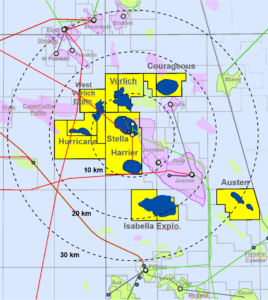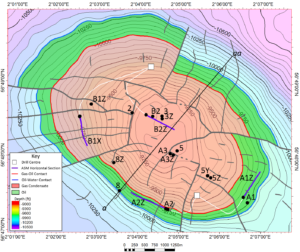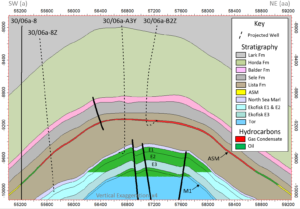19th February 2019
Event phone:
Abstract
Food and drink served from 6:00pm, lecture starts at 6:30pm
PESGB Evening Lectures are a free member-benefit so members do not require a ticket to attend, however a limited number of non-member tickets are now available to purchase for £15. Members still have free access, even when the website indicates that it is sold out.
Kindly sponsored by

The Ithaca operated Stella Field in Block 30/6a lies at the centre of a hub and spoke development referred to as the Greater Stella Area (GSA). The development reflects the maturity of the Basin in that individual field hydrocarbon volumes are relatively modest and the ongoing nature of the GSA project is focussed on tying in similar neighbouring discoveries.
Stella came on stream in February 2017 and production for the first tie-back from the Harrier Chalk field, 8 km to the South, was achieved in July 2018. The Vorlich Field, 10 km to the North, is due to be tied in in 2020. Further undeveloped discoveries include the Hurricane to the West, the Austen to the Southeast and Courageous to the Northeast. Securing the acreage in these areas has been key to realising the GSA hub and spoke plan. Further exploration potential is recognised in Vorlich West and Isabella prospects.

Figure 1. Greater Stella Area.
The Stella Field is a four-way, dip-closed and salt-cored dome with a 600ft gas-condensate column underlain by a 250ft oil column within the 5–30 ft thick Paleocene Mey Sandstone Member. Due to a historical carry over form early work in the basin these sands are commonly referred to as the Andrew Sandstone Member (ASM). Oil is also present in the underlying chalk reservoirs of the Danian Ekofisk and Maastrichtian Tor Formations. The principle ASM reservoir is interpreted to have been deposited from a single event turbidite or mega turbidite forming a regional sheet sandstone covering an area of 20x50km2.
The Stella development comprises 4 ASM and one Ekofisk horizontal producing wells tied back to a floating production facility called the FPF-1. Oil is exported to the Norpipe pipeline system and gas to the CATS system.
Since the discovery of the field in 1979 and first oil in 2017 there have been three phases of appraisal. The field development has been challenging as the 38 year gap between discovery and first oil suggests. The main operation challenges have been to geosteer the horizontal wells in the thin ASM reservoir whilst reacting to unexpected structural undulation. The main production challenge has been to understand the degree of compartmentalisation over the ASM reservoir which is related to the radial fault system. The chalk reservoir has had its own issues of defining a fracture system and understanding the permeability of the matrix rock.
The presentation will summarise the field’s appraisal and development and focus on some of the technical challenges encountered.

Figure 2. Top ASM depth structure map illustrating hydrocarbon fluid contacts (for a-aa cross section see Figure 3)

Figure 3. Cross section across the Stella Field (see Figure 2 for line of section).
Venue Information
Venue information
Venue name:
Jurys Inn

